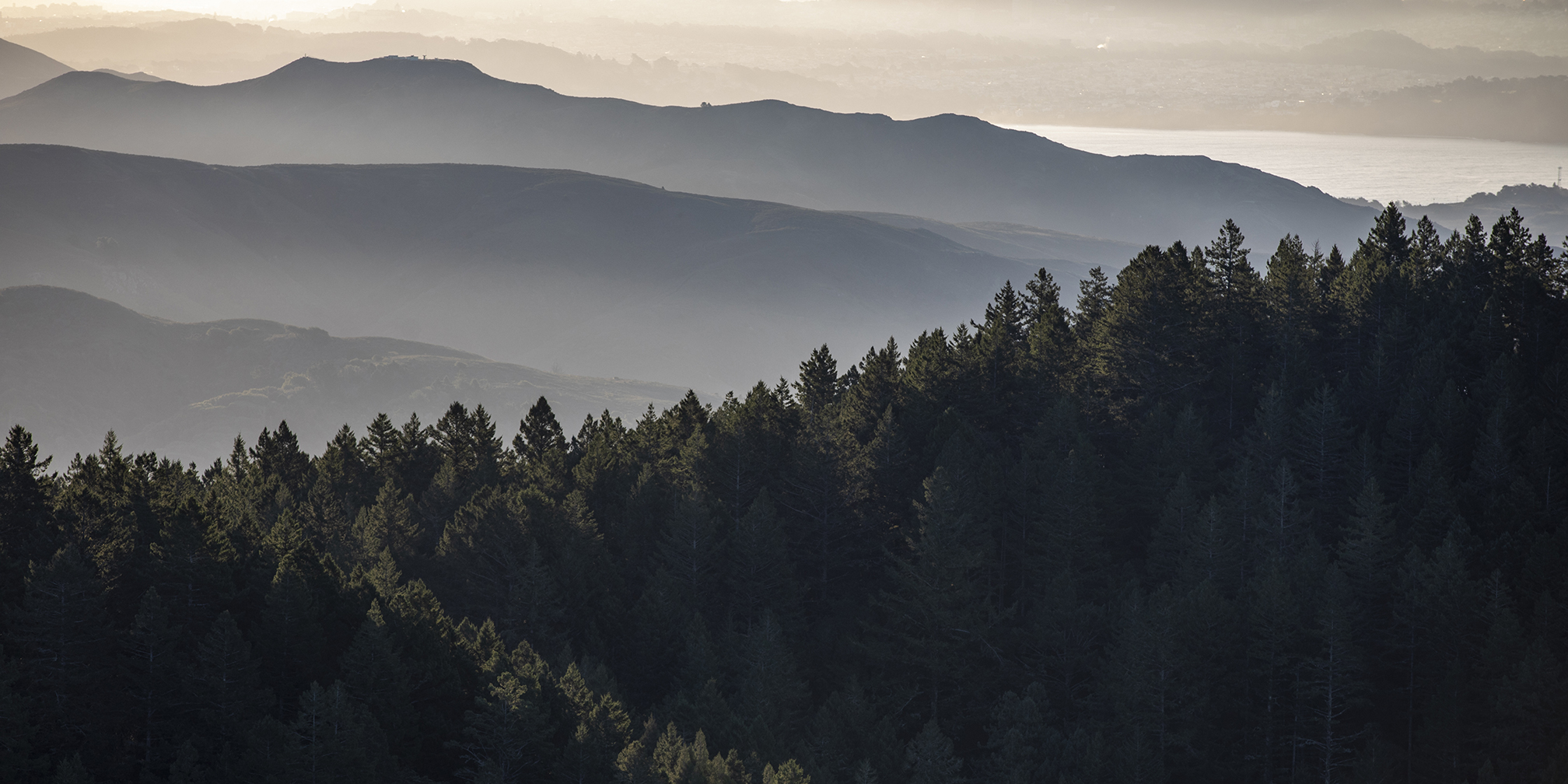ONE TAM PARTNERS RELEASE 10-YEAR FOREST HEALTH STRATEGY FOR MARIN

Photo: Paul Myers for the Parks Conservancy
For Immediate Release
September 5, 2023
MEDIA CONTACT:
Beatrice Kilat
Golden Gate National Parks Conservancy
415-561-3092
media@parksconservancy.org
ONE TAM PARTNERS RELEASE 10-YEAR FOREST HEALTH STRATEGY FOR MARIN
SAN FRANCISCO (September 5, 2023)—The National Park Service, California State Parks, Marin Water, Marin County Parks, and the Golden Gate National Parks Conservancy working in partnership as One Tam, have released the Marin Regional Forest Health Strategy (Forest Health Strategy), laying out a new model for understanding and caring for forests collaboratively at a meaningful scale in Marin County. Over a third of Marin is blanketed in a mosaic of forests—184 square miles covering an area four times the size of San Francisco.
“The Forest Health Strategy really helps us to look at the big picture and be able to take actions that make sense at the landscape scale, not just within any one jurisdiction's lands,” said Alison Forrestel, Chief of Natural Resources and Science for the Golden Gate National Recreation Area.
The innovative approach to forest stewardship in the Forest Health Strategy brings together community engagement, environmental justice, climate planning, and best available science to protect and improve forest health and resilience in Marin County over the next decade.
Today, forests face threats such as introduced diseases and weeds, absence of fire, climate change, and others. To address the impacts of such threats, the Forest Health Strategy achieves the following new and necessary pieces for protecting forests:
-
Describes the current condition of key forest communities in Marin County, and how to address threats that currently impact them
-
Uses best available data, local knowledge, and expert analysis to identify how and where agencies can make a difference for forests, working both independently and together across jurisdictional boundaries
-
Establishes a meaningful baseline to measure future changes in forests, through critical new datasets and methods to build upon
-
Delivers a thoughtful path forward for projects and programs designed to protect and improve forest health and resilience in Marin County over the next decade, including a suite of implementation-ready projects
The Forest Health Strategy’s development was led by One Tam, and contributors included One Tam partner staff and scientists, consultants, and the Federated Indians of Graton Rancheria (the Tribe). The Tribe is the only federally recognized Tribe whose ancestral territory is present-day Marin County. One Tam continues to consult and collaborate with the Tribe to inform this strategy and our future endeavors to ensure the Tribe’s perspectives and experiences are part of One Tam efforts. One Tam is also collaborating with the Marin Wildfire Prevention Authority and fire agencies on data and information sharing and will partner with them on future projects where there are opportunities for work that can both restore forests and increase public safety. While developed by public lands agencies in southern Marin, it can be a guide for work County-wide, and serve as a model for other regions working to protect forests.
Everyone has a role in our collective efforts to protect Marin’s special places. Learn more at onetam.org/forest-health.
About One Tam: One Tam is a partnership of the National Park Service, California State Parks, Marin Water, Marin County Parks, and the nonprofit Golden Gate National Parks Conservancy to ensure the long-term health of Mt. Tamalpais. Our partnership leverages the skills and resources of each partner and inspires community members to support the long-term stewardship of the mountain. www.onetam.org
About the One Tam Partners:
California State Parks: The California State Parks are dedicated to providing for the health, inspiration and education of the people of California by helping to preserve the state's biological diversity, protecting its most valued natural and cultural resources, and creating opportunities for high-quality outdoor recreation. www.parks.ca.gov
Golden Gate National Parks Conservancy: The Golden Gate National Parks Conservancy is the nonprofit partner of the National Park Service overseeing the Golden Gate National Recreation Area—84,000 acres of national parkland spanning the San Francisco Bay Area, including Muir Woods, Ocean Beach, Crissy Field, and Alcatraz Island. The Parks Conservancy is a membership organization created to preserve the Golden Gate National Parks, enhance the experiences of park visitors, and build a community dedicated to conserving the parks for the future. With our local and federal partners, the Parks Conservancy is committed to the work of supporting Bay Area national parks as places where we can further racial and social justice for our community and climate resilience for these protected lands. www.parksconservancy.org
Marin County Parks: Marin County Parks maintains 17,900 acres of public parks and open space preserves. It is dedicated to educating, inspiring, and engaging the people of Marin in the shared commitment of preserving, protecting, and enriching the natural beauty of Marin's parks and open spaces, and providing recreational opportunities for the enjoyment of all generations. www.marincountyparks.org
Marin Water: Marin Water is a public utility providing water to more than 191,000 people in a 147-square-mile area of southern and central Marin County. In operation since 1912, MMWD is the oldest municipal water district in California. The district’s mission is to manage natural resources in a sustainable manner and to provide customers with reliable, high-quality water at a reasonable price. www.marinwater.org
National Park Service: Golden Gate National Recreation Area is one of the most visited parks in the National Park Service, hosting more than 15.6 million visitors in 2022. A diverse park with abundant recreational opportunities, as well as natural, cultural, and scenic resources, it encompasses more than 80,000 acres across three counties, Marin, San Francisco, and San Mateo. The park also administers two other NPS areas, Fort Point National Historic Site, a Civil War era fortress built on the northernmost point of land in San Francisco, and Muir Woods National Monument, which comprises an impressive stand of old growth coastal redwoods in Marin County. www.nps.gov/goga
###
